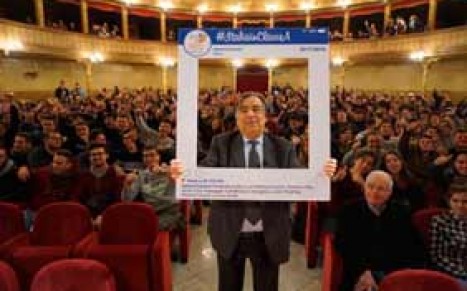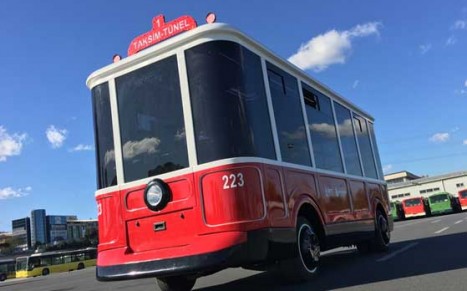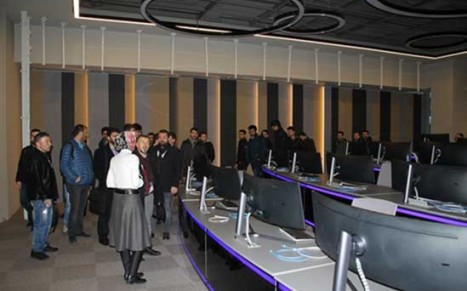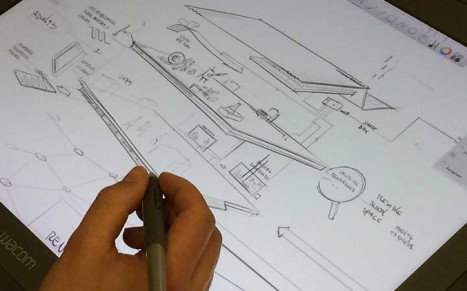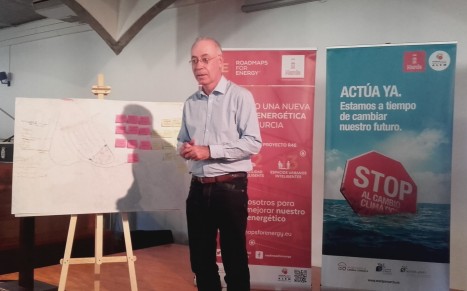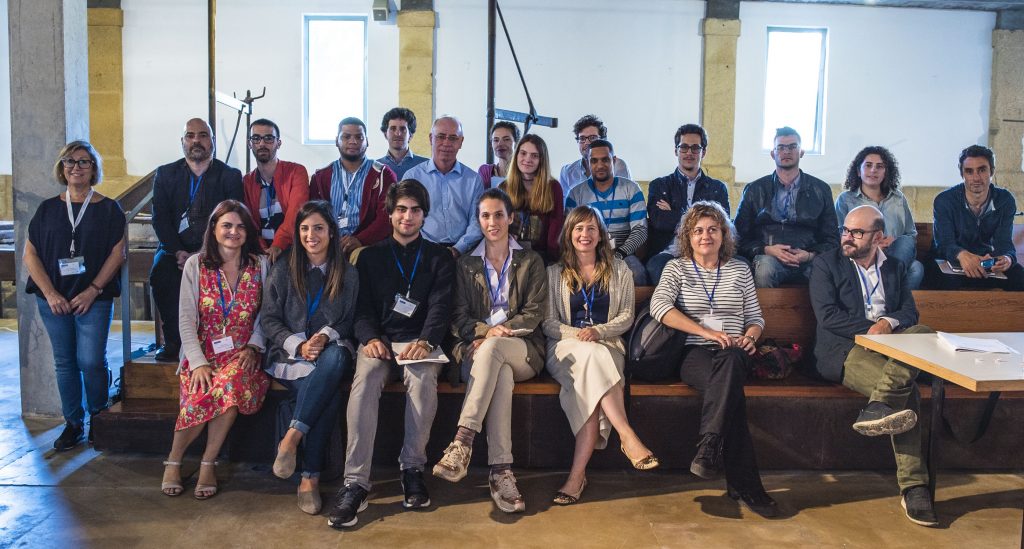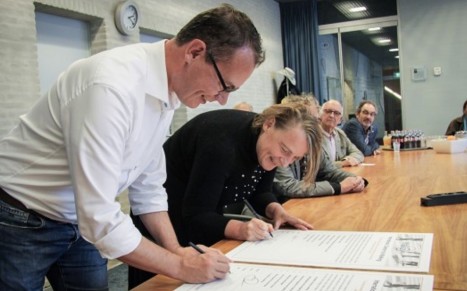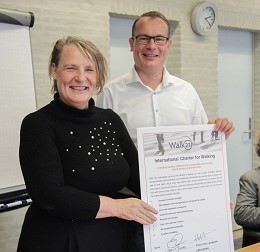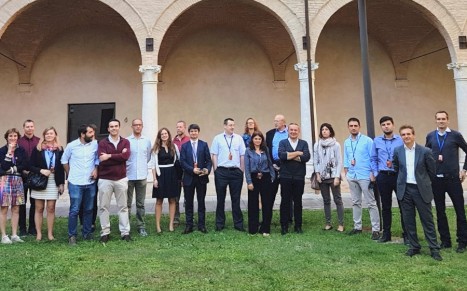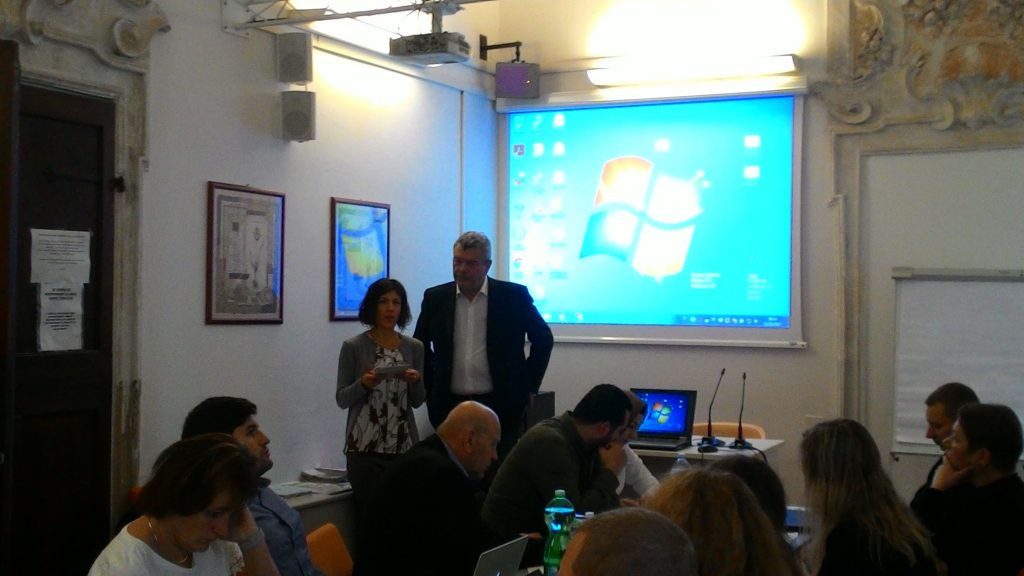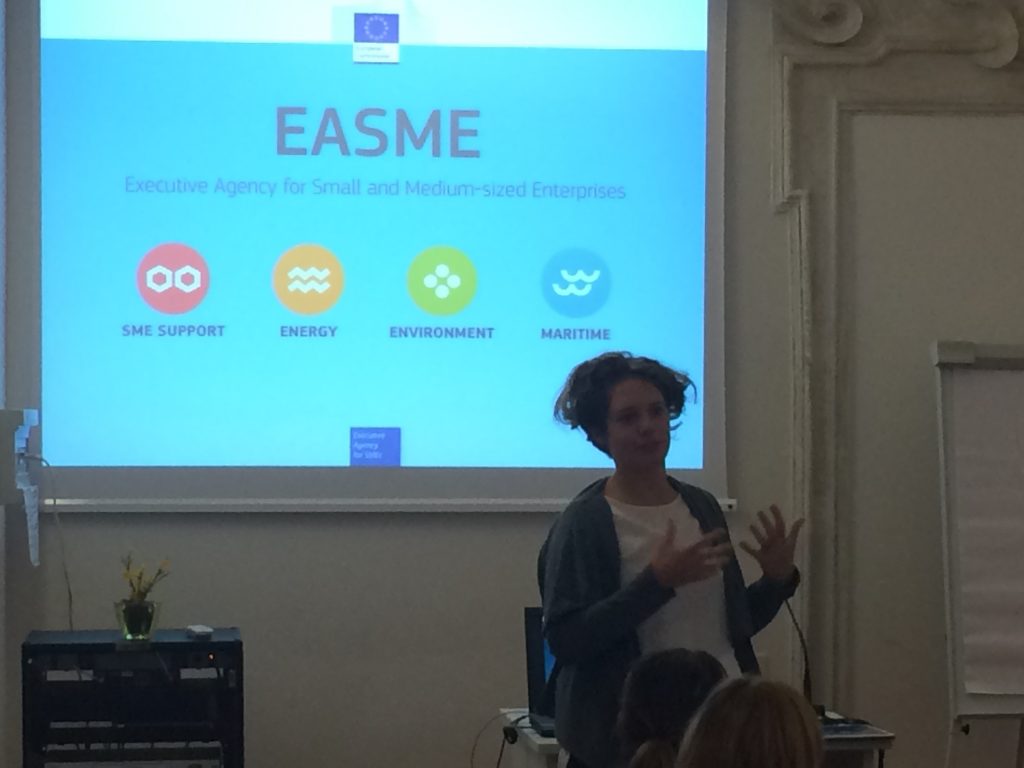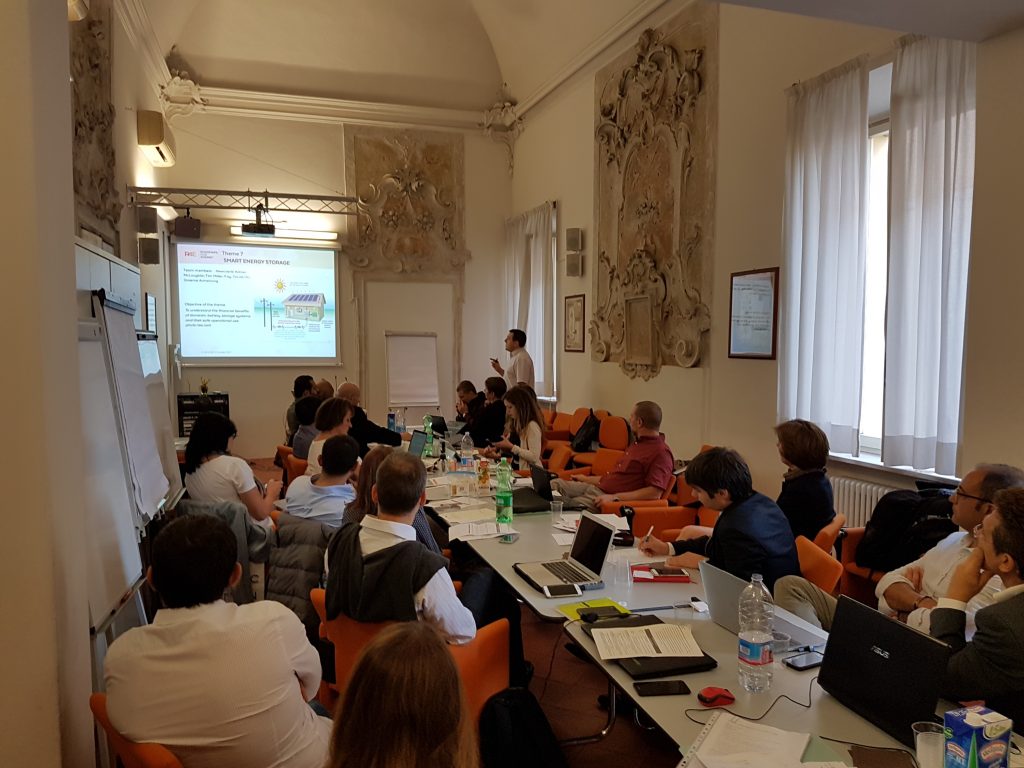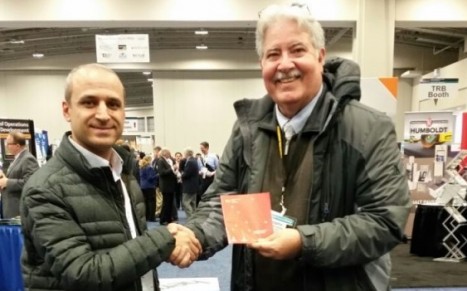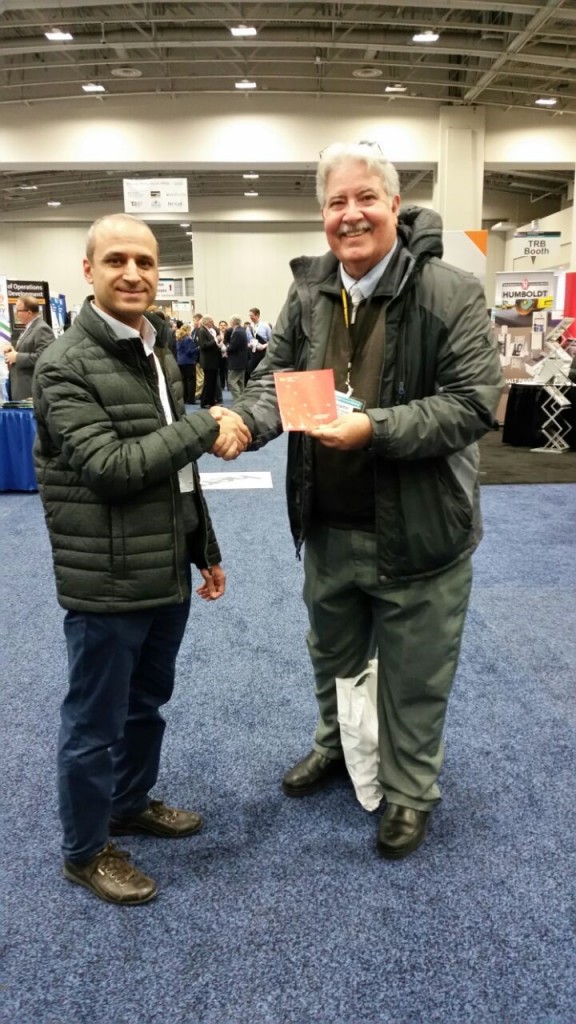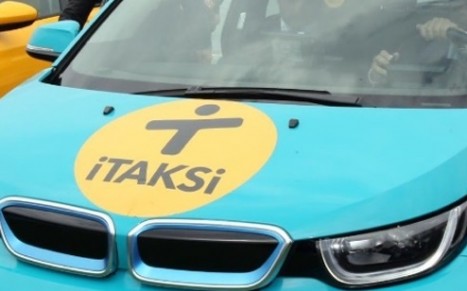Blog : 52s Posts Found
R4E project in Palermo
R4E project in Palermo
City of Palermo
EE FACTOR: SHOW ON ENERGY EFFICIENCY
The final step with students of the City of Palermo, involved in a dissemination program about sustainable development, greenhouse gas emissions reductions and energy efficiency, within the project called “R4E Roadmaps for Energy”, it ended at the Biondo Theater in Palermo, in the presence of the Mayor Teacher Leoluca Orlando and the Councilor for the Environment Eng. Sergio Marino and the ENEA (National Agency for Energy efficiency) professionals during a show- conference, with the comic actor: Diego Parassole.
Considering that, our city has shared the program Italia in Classe A, the first national information and training campaign on energy efficiency, promoted by the Ministry of Economic Development and implemented by ENEA, in implementation of article 13 of Legislative Decree no. 102/2014 which provides, in paragraph c, to: “educate school students of all levels and to a conscious use of energy”.
Legislative Decree 102/2014 implements the Energy Efficiency Directive 2012/27 / EU, envisaging actions to “promote and facilitate the efficient use of energy” with the aim of reducing primary energy consumption by 20 million tons equivalent by 2020.
One of the initiatives in Italy in Class A is “Energy Efficiency on the road,” a tour that unfolded throughout the Peninsula, touching 10 cities, in order to raise awareness of the issues of energy efficiency and Palermo, together with Rome, represents the important venue for the conclusion of the initiative.
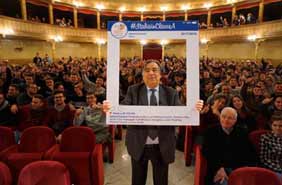
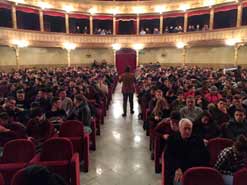
The show conference, dedicated to students involved, in an ironic way, by Diego Parassole who made them reflect on current topics such as consumptions, the environment, new technologies and energy efficiency, through moments of great comedy, with a tight rhythm and a language very close to that of the students.

Diego Parassole is a writer and comedian, known for his participation in the television program “Zelig”. He has dedicated many of his theatrical performances to environmental issues. On this occasion, he built, with the scientific support of the ENEA National Agency for Energy Efficiency, a comic monologue full of ideas for reflection, sometimes irreverent.
The organization of the event was managed by the Energy Manager of the Municipality of Palermo, Eng. Antonio Mazzon and the Head of the Environmental Education Laboratory of the City of Palermo Dott.ssa Nunzia La Barbera and the Experts of ENEA Eng. Francesco Cappello and Ilaria Sergi.
For further details, click on:
http://www.italiainclassea.enea.it/news_dettaglio.aspx?id=167
https://www.facebook.com/ItaliaInClasseA/posts/1805080913130020?pnref=story
First Autonomous Vehicle project of IETT will be introduced at Smart City Expo in Istanbul
First Autonomous Vehicle project of IETT will be introduced at Smart City Expo in Istanbul
[/vc_column_text][/vc_column_inner][/vc_row_inner]
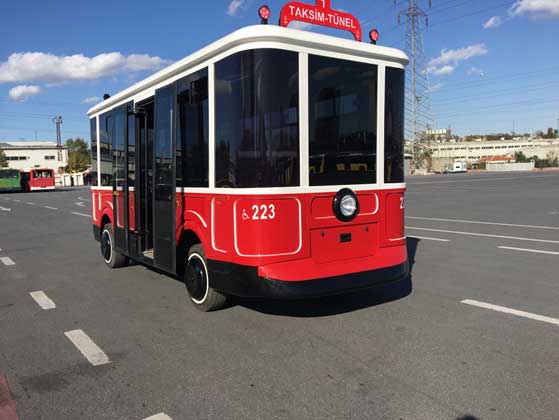
IETT, which produced Turkey’s first trolleybus called “Tosun” in the past and which is the leading organization of public transport in Istanbul, implemented an innovative vehicle project with a cutting-edge technology in cooperation with the universities and local entrepreneurs. Autonomous Vehicle Project was completed in order to show our country’s human resources, know-how and production capacity that shapes the future technology. A new vehicle was developed within the scope of the project that aimed to raise awareness on self-driving vehicle technologies and provide an inspiring example for future endeavors in this field. It is a 100% self-driving electric vehicle with a range, which is expandable depending on the battery capacity.
IETT established close cooperation with the universities and the expert companies in this field for producing this vehicle, which has a unique design that reflects IETT’s historical background. Electric driven technology is used for entire hardware of the vehicle including the main drive, direction control and hydraulic system control while products like independent radar, lidar and GPS systems are also used. All in all, this autonomous vehicle project is just a start for both IETT and Istanbul Metropolitan Municipality (IMM). New generation vehicles like autonomous and electricity cars will transform transportation. This project of IETT is in line with the objectives of the municipality’s both R4E Project Vision and ongoing projects.
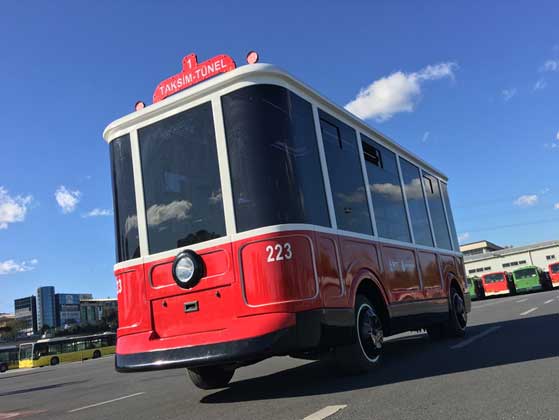
With this project IETT aims the following:
- Ensuring that IETT acquires the cutting-edge technology and knowledge accumulation in this field with the autonomous vehicle project,
- Increasing both national and institutional know-how together with the technological advances,
- Ensuring that IETT becomes a pioneering organization in the field of technology,
- Increasing the possibilities of cooperation by bringing public institutions, universities, local manufacturers and entrepreneurs working in this field together,
- Supporting the exchange of information and experience,
- Developing human resources of our country,
- Developing an innovative and cutting-edge product,
- Showing that our country’s human resources, knowledge accumulation and production capacity can shape the future of technology,
- Raising awareness on self-driving vehicle technologies and providing an inspiring example for future endeavors in this field, and
- Maximizing the use of national resources.
Transport Management Center of IMM Hosted Yıldız Technical University’s Academics and Students
“R4E Project” was on the agenda during the visit of academics and students of Yıldız Technical University
Istanbul Metropolitan Municipality (IMM)’s Transportation Management Center (TMC) was visited by a delegation consisting of academics and students from Yıldız Technical University Faculty of Civil Engineering on December 28th, 2017, to examine the TMC’s studies on site and to get information about innovative transport projects, which are carried out in Istanbul.
During the visit, which was hosted by Ms. Ayşegül Çalışkan and Deputy Traffic Manager Esma Dilek, detailed information about Intelligent Transportation Systems used in TMC and the recent transport projects carried out in Istanbul were provided to the visitors.
Ms. Çalışkan and Ms. Dilek also gave information about Roadmaps for Energy (R4E) Project, which is funded by European Union’s Horizon 2020 Program that aims to develop a new energy strategy through visions and roadmaps for the eight partner cities, in co-creation with relevant local stakeholders. It was explained to the visitors that R4E Project focuses on three areas, which are Smart Mobility, Smart Buildings and Smart Urban Areas, within the domain of sustainable energy that are closely linked to the municipalities main responsibilities. IMM project team and academics also discussed the future EU Project collaboration possibilities. At the end of the visit, visitors were invited to Final Conference of the R4E Project which was held on February 7th, 2018 in Murcia, Spain.
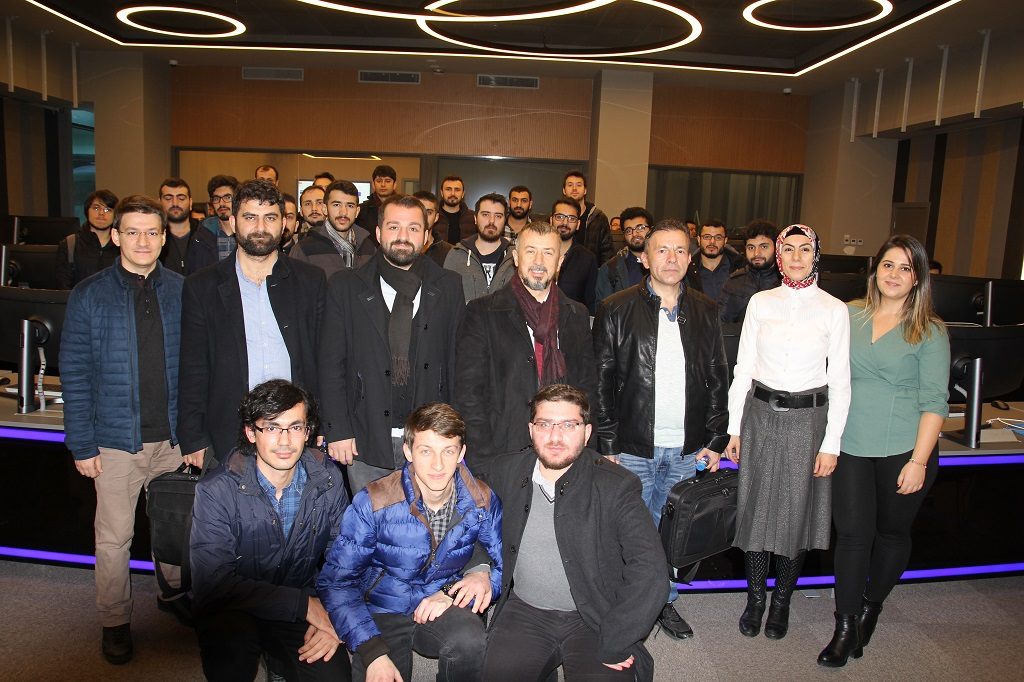 For more information and details, please visit:
For more information and details, please visit:
The desired Scenarios of Forlì at 2050
THE DESIRED SCENARIOS OF FORLI’ AT 2050
From 13rd to 15th April 2016 the city of Forlì has returned to question on its future at 2050 concerning the issues related to sustainability and urban quality during the “Scenario Workshop”, organized by the Municipality within the activities of the R4E project – Roadmpas for Energy. Elke van Ouden and Rianne Valkenburg from the TU/lighthouse (the Innovation Center of the Technical University of Eindhoven) were the facilitators of the workshop – attended by municipal technicians and managers, businesses, local stakeholders – with the aim of defining the visions/scenarios of the city for 2050.
Starting from the ambitions of the city, defined in the previous workshop of July 2015, it has been possible to outline the Forlì of the future (at 2050) in the fields of urban spaces and of energy efficiency of buildings.
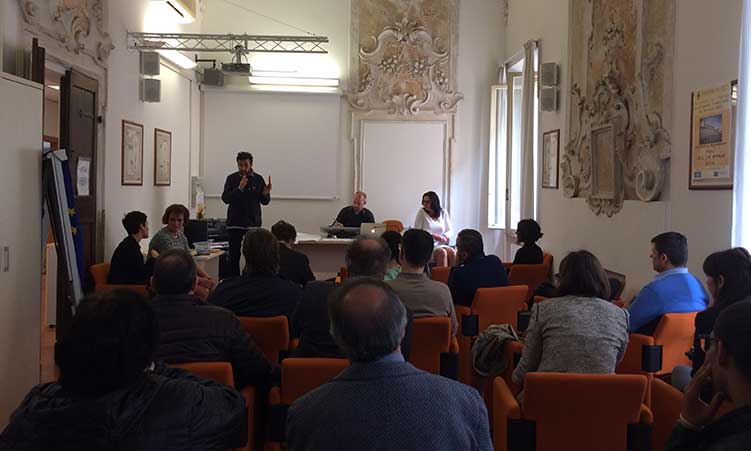
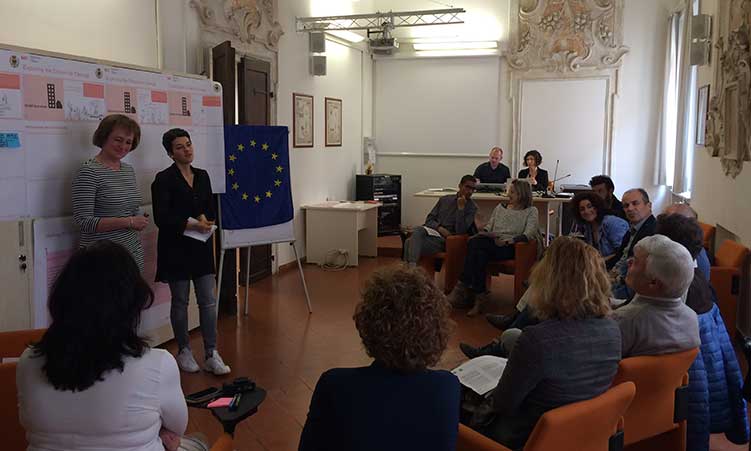


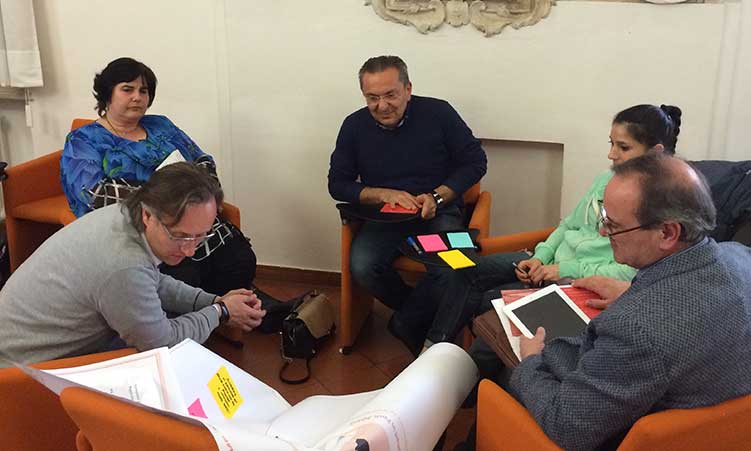
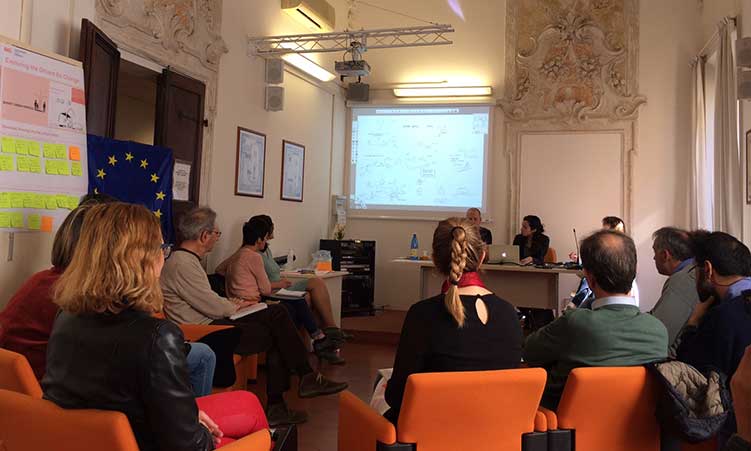
In 2050, people in Forlì value their historical heritage and enjoy a compact, well-planned city with a lively centre. On one side historical buildings are renovated with respect for their heritage, and have new uses that serve the community, on the other side the urban planning focuses on providing spaces for social engagement also through well connected and well-equipped green spaces. There are no standard rules: each building has a different social and cultural background that is revived while it is transformed in order to be in line with the needs of 2050. For example, a church may become a museum or a theatre, thereby maintaining the function of connecting citizens.
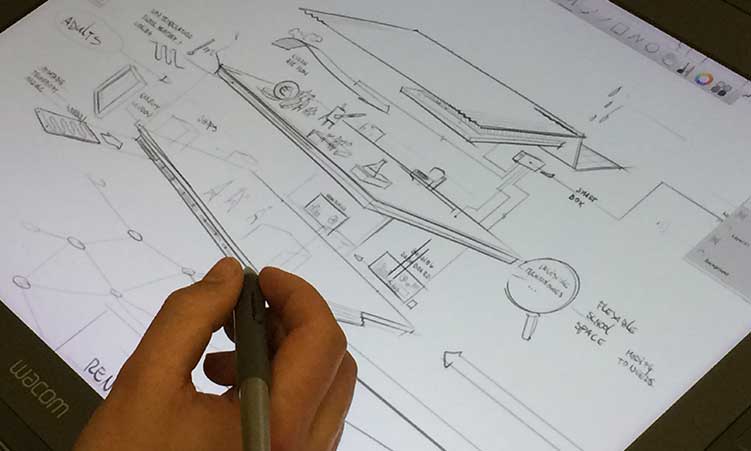
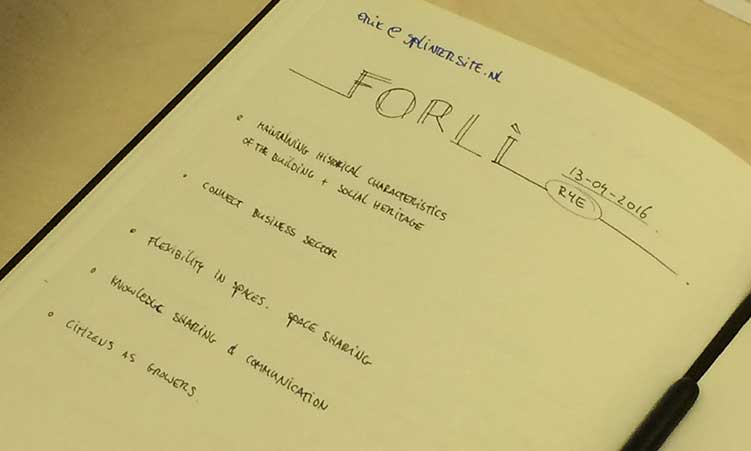
The top-level infrastructure of Forlì of 2050 will attract companies (both established and start-up) to set up their activities and to contribute to the local economy. Consequently, the economy will be flourishing with new businesses that create community value.
Entrepreneurs will develop new sharing services for citizens, thereby reducing the use of land and environmental resources. Citizens will have a different mindset and reduce their footprint actively by choosing sustainable energy, locally produced food and shared services. Citizens will enjoy ‘slow mobility’ (walking, cycling and automated vehicles), allowing more attractively designed streets. At the same time Forlì will provide a well-designed network of routes, exploring nature, culture, sports and local wine, food and handicrafts. The routes will respond to the demand for a quality lifestyle supported by smart technologies. Schools and hospitals will be leading examples of ‘people smart’ services that encourage learning and healing. The new urban fabric features taller and more efficient buildings, while preserving and enhancing unique historical assets.
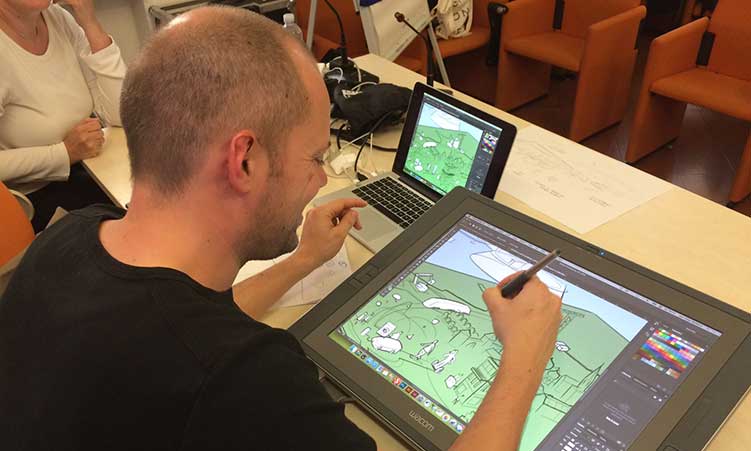
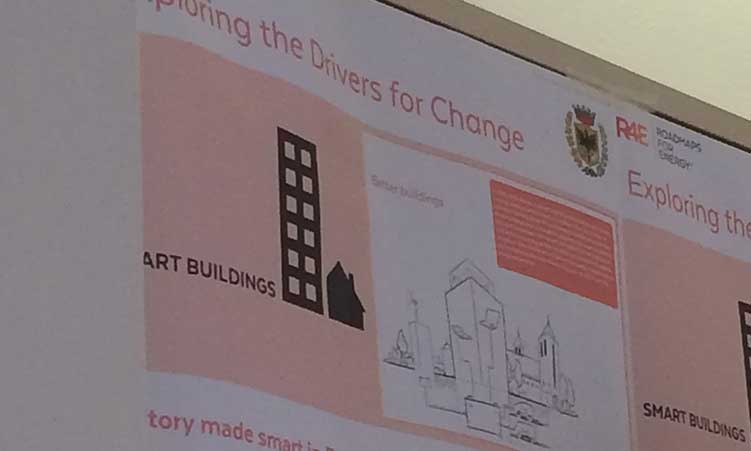
The new buildings will offer modern city facilities: they will produce and store (renewable) energy, provide vertical vegetable gardens, and green surfaces that reduce heat stress and recover rainwater. New technologies will be used to achieve zero-emission, self-sufficient buildings. Superb buildings will maximise comfort for the users and facilitate building management because they use the latest technology for building automation, air quality control, renewable materials and efficient installations.
Furthermore the aim towards 2050 is also that buildings and spaces will be versatile, so they can be used by the community for different purposes on a 24/7 basis.
These identified elements of the desired future scenario have been also graphically developed and summarized in two tabs produced by TU/lighthouse.
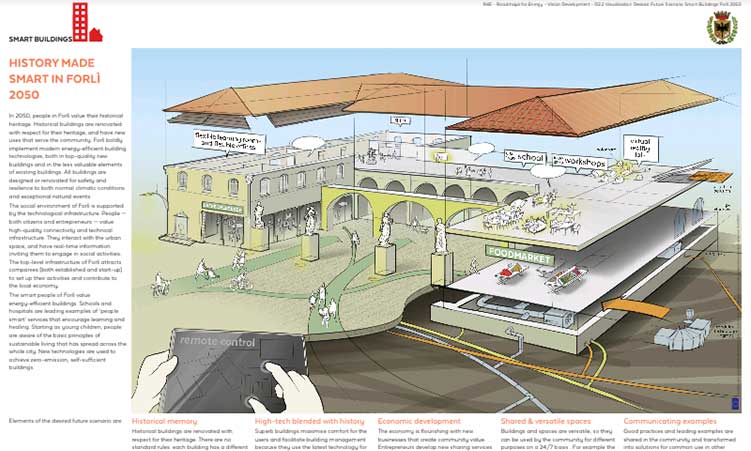
The 2050 city visions will be the starting point of the R4E project workshop which will be held in Forlì in March 2017.
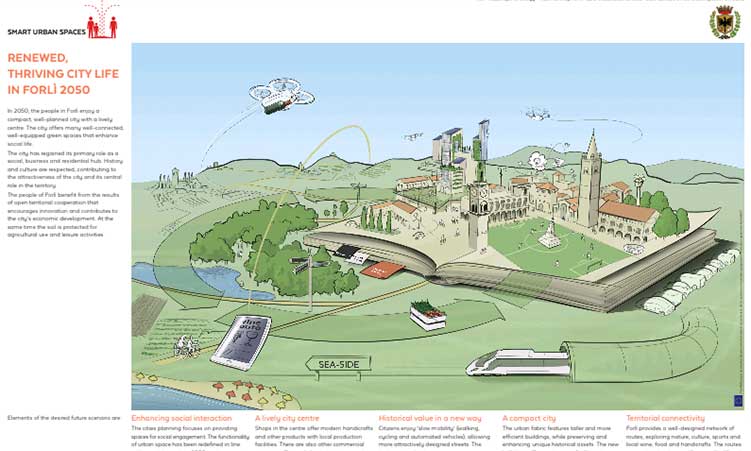
This next workshop will aim at defining the roadmaps of direction towards an intelligent city, that is more sustainable, more functional and livable, thus allowing the Municipality of Forlì to refine its economic, social and environmental development strategy, enriched by the participation of several actors and by the comparison with different cities like the other European partners.
Climathon event in Murcia
Climathon event in Murcia
The city of Murcia looks to 2030 with debates, presentations and proposals on the effects of climate change on the world day Climathon.
The City of Murcia has participated in the Climathon 2017, the largest global climate change event, which is held for 24 hours simultaneously in major cities around the world.
It is, as explained by the councilor for Urban Planning, Environment and Garden, Antonio Navarro during its closure, “a space for debate, participation and identification of actions that should be implemented in our city to promote resilience to climate impacts more significant, such as water scarcity, the increase in extreme weather events, and the drift towards an increasingly hot climate “The participants have been divided into working groups, with the intention of proposing ideas that improve and enhance the integration of water in our urban landscape, elaborating projects for specific spaces, such as the Tirocosa Garden, next to the promenade of Espinardo and the Murcia River project, the most important fluvial space in the city.
During the first session of the event, the team of Murcia city council introduced the R4E project to the attendees and underlined the relevance of this project regarding reducing the CO2 emssions and improving the energy efficiency within the Municipality.
Eindhoven and Tilburg first Dutch cities to sign “The Charter for Walking”
Eindhoven and Tilburg first Dutch cities to sign “The Charter for Walking”
On Wednesday September 13, 2017 the two Brabant cities of Eindhoven and Tilburg were the first local governments in the Netherlands to commit themselves to the principles of the ‘Charter for Walking’, when Mary-Ann Schreurs, Alderman of the city of Eindhoven, and Mario Jacobs, Alderman of the city of Tilburg, signed the Charter.
This Dutch Charter is a translation of the International Charter for Walking: a declaration in which local governments and other organizations declare to commit themselves to the human being as a pedestrian or hiker. The International Charter identifies the needs of people on foot and provides a common framework to help authorities refocus their existing policies, activities and relationships to create a culture where people choose to walk and to give the pedestrian more attention.
By the sharing of knowledge , the importance of walking (healthy, efficient and sustainable) will be spread and the conditions for choosing the mode of walking could be improved.The approach was immediately embraced by both Aldermen. They mentioned the fact that worldwide in the year 2050 two out of three human beings are living ina city, meaning that there will be an enormous amount of people living on a small piece of land. By planning the environment in such a way that human beings feel their environment is attractive, people will be stimulated to walk instead of using their car. By walking in an attractive environment, people can move in a healthy way. Walking is very interesting transport mode in cities, as distances are relatively small.
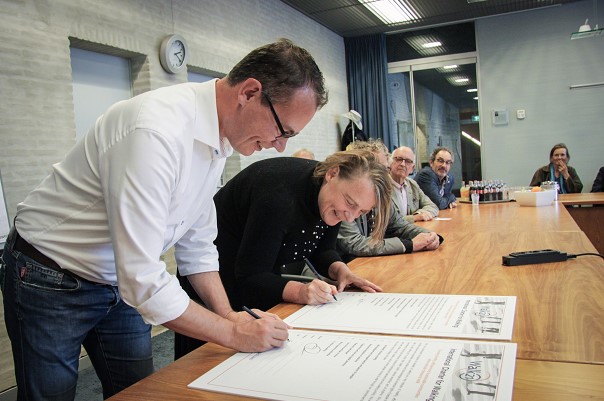
The charter for walking invites organizations to collect and share inspiring initiatives to give more attention to the pedestrian. The charter also supports a new vision on mobility and the planning of the public space. In this new vision the mode of walking plays an important role: safe and attractive streets stimulate healthy, active mobility of people, in which the human being is the human size.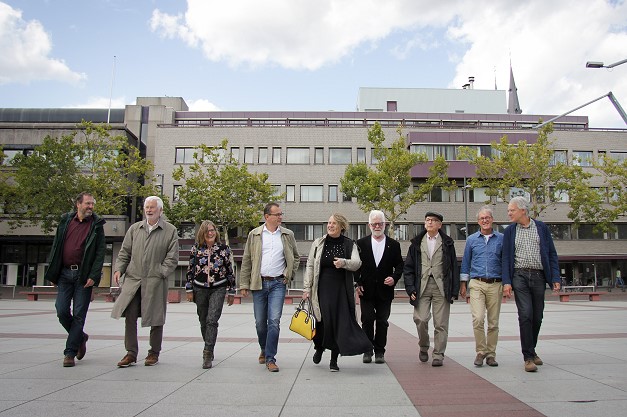
Joint Portfolio Meeting: Forlì, 10th-13th October 2017
Joint Portfolio Meeting: Forlì, 10th-13th October 2017
From October 10th to 13th the Municipality of Forlì hosted the meeting of the European project R4E – Roadmaps for Energy aimed at develop a project portfolio with new project initiatives to reach the ambitions, visions and roadmaps of the R4E cities.
The Councilor for the Environment, Nevio Zaccarelli, opened the meeting’s works, bringing greetings from the city administration to guest partners from 7 European cities (Eindhoven, Murcia, Sant Cugat, Palermo, Tallin, Newcastle, Istanbul) involved in the project together with the technical partners from the TUe / lighthouse innovation center of the Technical University of Eindhoven and from the Polytechnic University of Catalonia.
The first two days of the meeting the partners worked on defining the next project activities and strategies to be used in the presence of Dr. Giulia Pizzini as Project Officer of EASME, the Executive Agency for Small and Medium-sized Enterprises (EASME) established by the European Commission for the management of various European programs.
During the meeting some study visits have been organized to focused on smart buildings and urban spaces themes.
 Visit to the Energy House at Forlì University Campus
Visit to the Energy House at Forlì University Campus
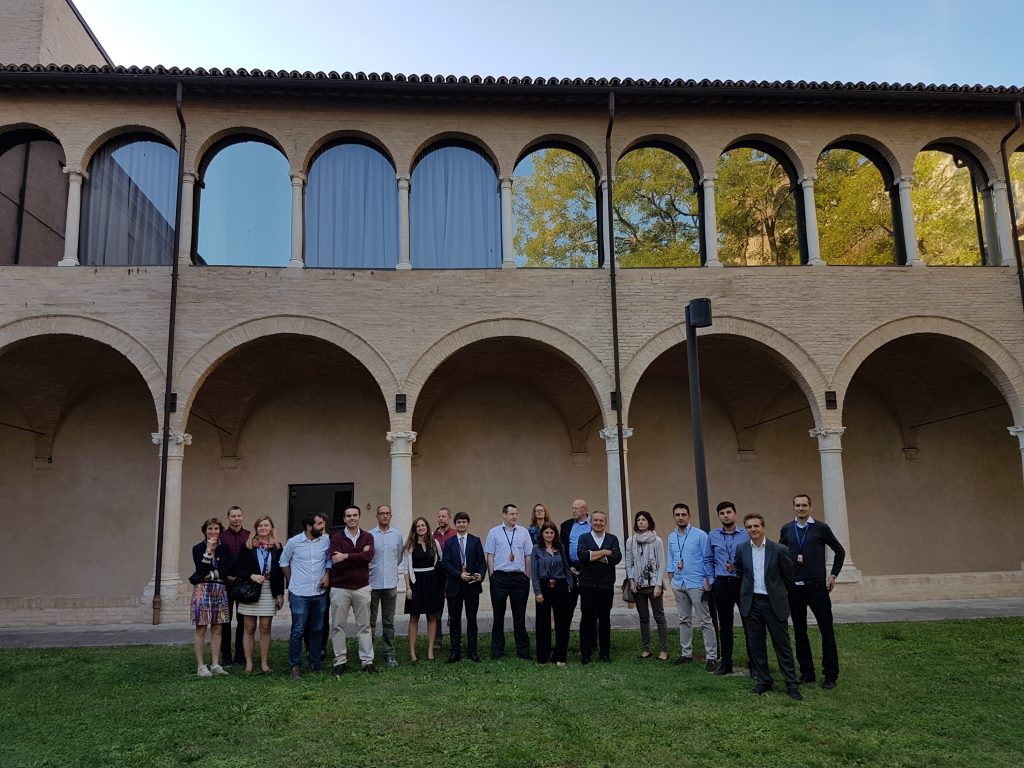 Visit to San Domenico museum in Forlì
Visit to San Domenico museum in Forlì
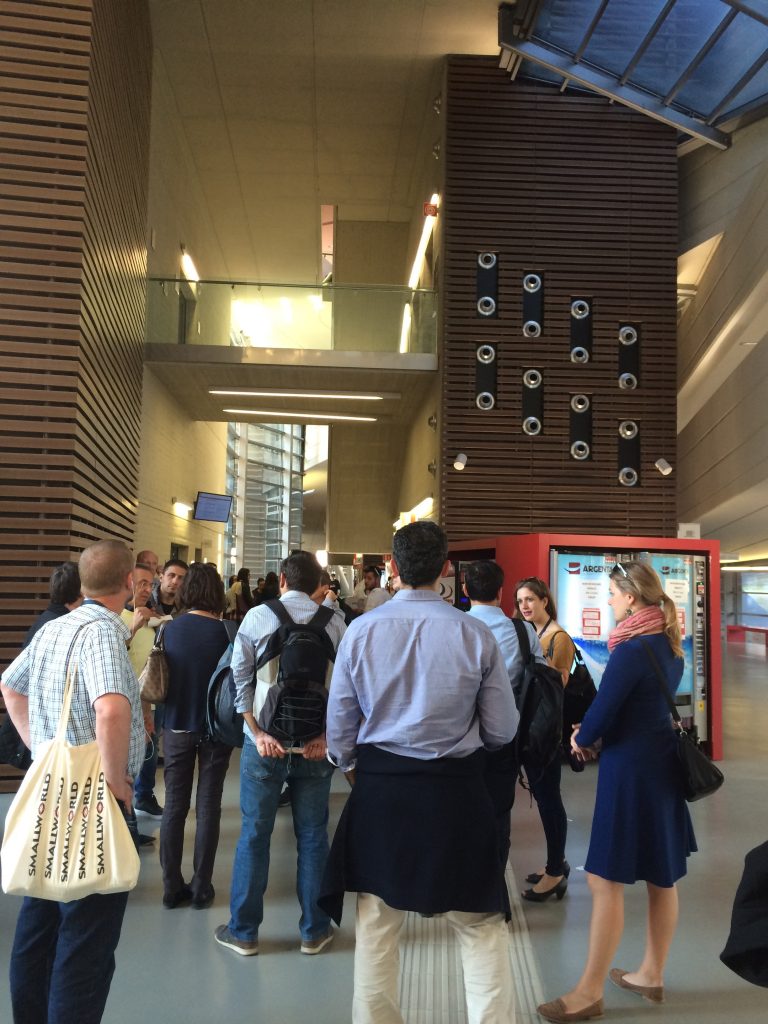 Visit to Forlì University Campus
Visit to Forlì University Campus
The next meeting will be held in Murcia in Spain and will be followed by the final conference of the project with an international scope.
R4E Introduced at International Conferences
R4E Project Introduced at TRB (Transportation Research Board) 95th Annual Meeting in Washington D.C. & INRIX ITS Innovation Event
TRB 95th Annual Meeting was held at Walter E. Washington Convention Center, in Washington, D.C between January 10-14th, 2016. The information-packed program reached more than 12,000 transportation professionals from the world.
IMM’s Director of Traffic joined the meetings and informed exhibition visitors about R4E Project and IMM’s activities carried out within the first two years of the project. He also gave out project brochures to participants so that they could get information about R4E Project goals, activities and partners.
Inrix is a global Software as a Service (SaaS) and Desktop as a Service (DaaS) Company which provides a variety of Internet services and mobile applications pertaining to road traffic and driver services. It organized a meeting in Madrid, Spain in May 2017. Local and foreign exhibitors presented their new products, projects and services about smart and sustainable cities from all over the world.
Ms. Ayşegül Çalışkan from IMM’s R4E Project team provided information about IMM’s Smart City solutions and R4E Project. She showed Smart Mobility video to visitors which is created in R4E Project.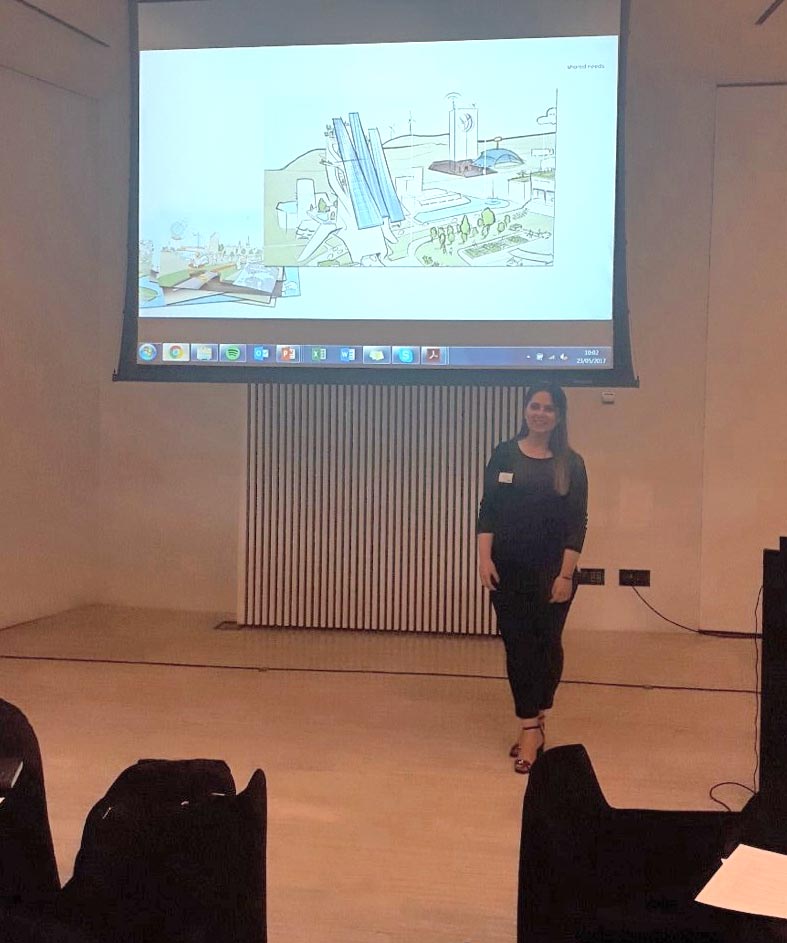
Mobile Accident Report” Service in Istanbul
“Mobile Accident Report” app launched in Turkey for the first time in the world
“Mobile Accident Report” application is now available on smartphones. Drivers who install the mobile app no longer need to carry an up-to-date accident report form and pen in their cars. They just need their smart phones with them to create reports after having accidents.
Drivers will be able to fill the accident assessment report much more quickly and easily with the new “Mobile Accident Report” application.
“Mobile Accident Report” application brings great advantages to drivers summarized as follows:
- No need to have the accident assessment form
- Do not lose time by sending accident assessment form to the insurance companies instantly
- Accident assessment form can be completed with less information
- Accident assessment form can be filled very fast
- Decrease the writing mistake rate of while filling accident assessment form thanks to app guidance
- Quick access to policy information with QR-code
- Ability to follow online defect results
- Access to the nearest insurance agencies, auto mechanics and hospitals with just one click in the event of an accident.
For detailed information about “Mobile Accident Report” application, please visit http://tkm.ibb.gov.tr/corporate/news-and-announcements/mobile-accident-report-service-started
Efficient Use of Taxis in Istanbul: “iTaksi”
Smart Taxi Management in İstanbul with “iTaksi”
iTaksi project, which brought a new vision to IMM’s Smart City concept and developed by Turkish engineers with national resources, was introduced at World Cities Expo in May 2017.
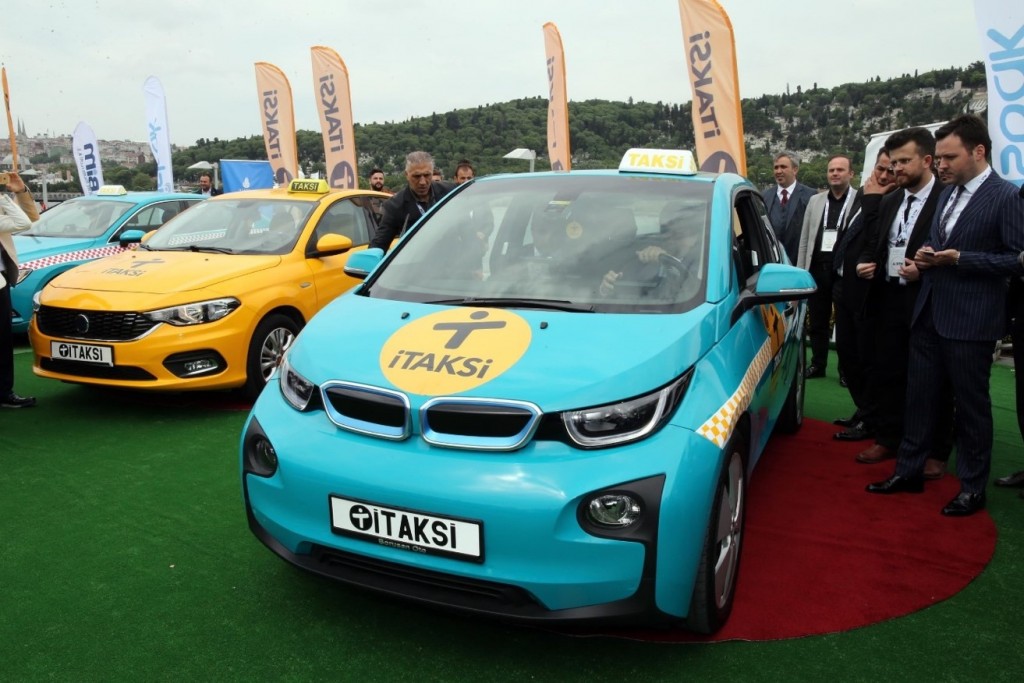 “iTaksi” project aims to utilize taxis efficiently which have a considerable share in transport of İstanbul. It will help taxis avoid wasting time and fuel consumption while looking for passengers in streets. It will enable passengers to find closest taxis and help save energy. All taxis in İstanbul will be managed remotely by Transportation Management Center of IMM and the communication between taxi drivers and passengers will be recorded to improve service quality and passengers’ satisfaction.
“iTaksi” project aims to utilize taxis efficiently which have a considerable share in transport of İstanbul. It will help taxis avoid wasting time and fuel consumption while looking for passengers in streets. It will enable passengers to find closest taxis and help save energy. All taxis in İstanbul will be managed remotely by Transportation Management Center of IMM and the communication between taxi drivers and passengers will be recorded to improve service quality and passengers’ satisfaction.
“iTaksi” will not only help save energy, time and resources, it will also help reduce traffic congestion in İstanbul which are caused by taxis circulating on the roads to find passengers. All taxis will be equipped with in-car surveillance cameras which will help passengers and drivers feel themselves safer.
“iTaksi” provides alternative payment options to passengers including İstanbulCard which is the default payment option in all public transport vehicles in İstanbul. Passengers of iTaksi will be able to select and view their routes offered by “İBB Navi” app which provides the optimal routes based on traffic conditions. “iTaksi” will facilitate the management of taxis by IMM and will ease find nearest taxis available.
